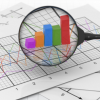analysis
 |
Before Data Analysis, You Need Data Preparation One of the prerequisites for any type of analytics in data science is data preparation. Raw data usually has several shortcomings in structure, format, and consistency, so first it has to be converted to a usable form. These are some types of data preparation you can conduct to make your data useful for analysis. |
|
 |
Designing Data Models for Self-Documented Tests When testing applications, documenting and interpreting test results can be a challenge. Data models enable us to collect and process test data more dynamically and uniformly. To design effective data models for self-documented tests, there are three important things to consider: what to document, collect, and report. |
|
 |
Testing the Requirements: A Guide to Requirements Analysis Everyone knows testing requirements is important, and everyone says they do it, but it seems like no one knows exactly how. The best way to solve this problem is to introduce a requirements analysis stage that has to be done before coding starts. No one knows a product as well as a tester who works with it every day! |
|
 |
Data-Driven Testing Skills in an Agile and DevOps World For agile and DevOps, an understanding of the role of data analysis in the test strategy is helping teams accelerate development, testing, and deployments. As we continue to enhance our testing effectiveness, data analytics skills are an important dimension in managing risks in a “continuous everything” world. |
|
 |
What You Should Consider to Make the Best Use of Your Collected Data We live in a world where data is constantly being recorded. In software, determining the timing of when to use that data is critical to making the most of the information. You should take into account data freshness, the data-gathering processes and any dependencies between them, and when to distribute information. |
|
 |
Here There Be Monsters: The Value of Data Profiling Monsters appeared on medieval maps to identify the unknown dangers of the sea. Likewise, the data profiles for an organization identify the points within its data. A robust data-profiling strategy can provide a more accurate picture of an organization’s data systems and find risks before they become monsters. |
|
 |
Getting Your Data to Work for You Practically everyone records data somehow. The real value comes from using that data to gain deeper insight. When used appropriately, data profiling can be a powerful tool for analyzing existing data, profiling for planned changes, or monitoring for unplanned circumstances, helping save time and remove risks. |
|
 |
Pick a Chicken: How to Prioritize and Get More Done A project manager was having trouble with his list of projects, all of which were behind schedule. They were all vitally important, so he was in a state of thrash with too many options to choose from. Luckily, Payson Hall was able to help him—thanks to his childhood experiences chasing chickens on a farm. |







